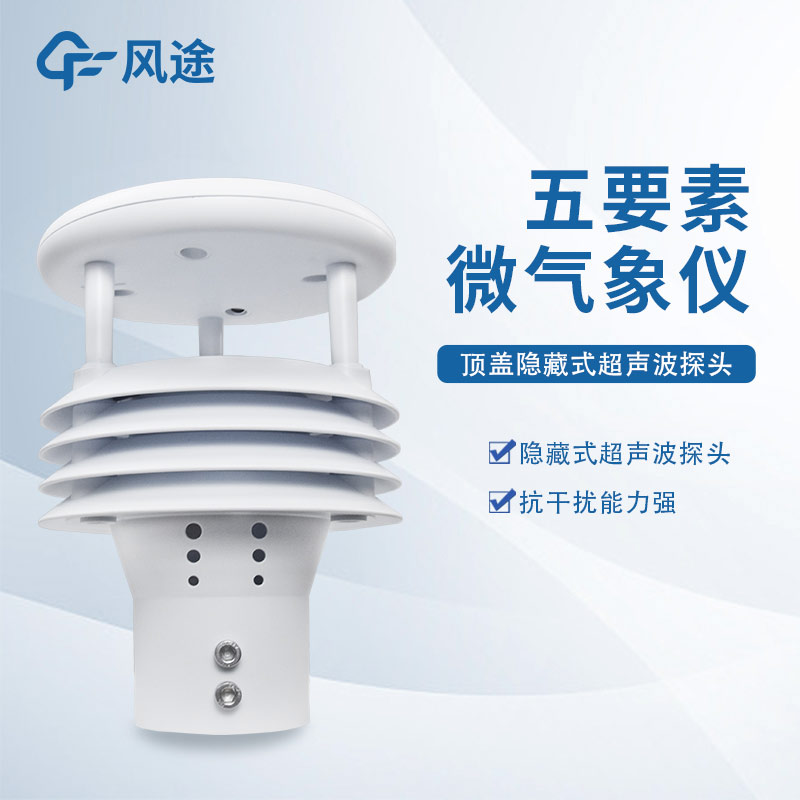Shandong Fengtu IOT Technology Co., Ltd
Sales Manager:Ms. Emily Wang
Cel,Whatsapp,Wechat:+86 15898932201
Email:info@fengtutec.com
Add:No. 155 Optoelectronic Industry Accelerator, Gaoxin District, Weifang, Shandong, China

Sales Manager:Ms. Emily Wang
Cel,Whatsapp,Wechat:+86 15898932201
Email:info@fengtutec.com
Add:No. 155 Optoelectronic Industry Accelerator, Gaoxin District, Weifang, Shandong, China
time:2024-07-12 08:52:22 source:Weather Station viewed:550 time
The Compact Multi-Parameter Automatic Weather Monitoring Station is a small-sized device that integrates numerous weather monitoring technologies. Favoured for its lightweight form factor and easy installation process, it allows for rapid deployment in diverse environments for continuous weather condition monitoring. The device captures and delivers critical weather data instantly, providing organisations and professionals with rapid and accurate weather intelligence to facilitate more efficient decision-making and management processes.
The device is equipped with an ultrasonic wind speed and direction monitor, radar rainfall detector, ambient temperature and humidity sensor, atmospheric pressure gauge, light intensity meter, UV radiometer and PM2.5 monitor. Known for its light weight and rugged construction, it requires no maintenance or field calibration and is capable of providing multiple data parameters simultaneously. Data output is carried out via RS485 format, ensuring seamless connectivity with computers, data collectors, or compatible communication devices for automatic weather stations supplied by our company.
The device determines wind speed and direction by measuring the propagation time of the ultrasonic signal from the northward-facing sensor (N) to the southward-facing sensor (S) and vice versa from S to N. The device is capable of measuring wind speed and direction from the northward-facing sensor (N) to the southward-facing sensor (S) and vice versa. Similarly, it compares the time the ultrasound travels from the westward-facing sensor (W) to the eastward-facing sensor (E) with the time it travels from E to W. For example, when the wind is blowing from the north, the ultrasonic propagation time from the N sensor to the S sensor will be shorter than the time from S to N, whereas the propagation times from W to E and from E to W remain the same. By analysing the difference in ultrasonic propagation time between the two points, wind speed and direction can be accurately calculated. This measurement technique is not disturbed by other environmental factors.
The device can be used with software that integrates a variety of functional modules, including standard mode, data acquisition, data presentation, graphical interface, and data storage. It allows the user to query real-time and historical data over any time range, supports data export functions, and can download data reports.

Waterlogging monitors are usually installed in areas of the city that are prone to waterlogging, such as low-lying areas, underground passages, and under overpasses. It acts as a "data collector", using high-precision water level sensors and other equipment to accurately collect key data s...
The history of human measurement of wind is extensive, evolving from ancient wind vanes and anemometers to modern high-tech equipment. Initially, people measured wind by observing wind vanes and anemometers. During the Renaissance, scientists invented more precise anemometers. In the 18th century, t...
Automatic weather stations are widely used in many fields such as agricultural and forestry climate monitoring, ecological environment and geological disaster monitoring, and can operate stably under harsh environmental conditions. It can monitor various meteorological environmental factors (environ...
The safety level of slope engineering is divided into first, second, and third levels according to factors such as damage consequences, types, and heights. The monitoring section is often selected at geologically weak or representative locations.The layout of monitoring points for slope automation m...